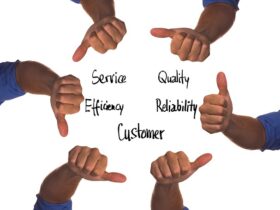With today’s business world increasingly interconnected, more and more companies find they don’t have to go it alone on their respective roads to success. Strategic partnerships and alliances open up new markets today, sharing resources and creating growth opportunities that would be very difficult or impossible to realize flying solo. Joining forces allows firms to leverage each other’s strengths and build something greater than what they could ever achieve singularly.
I have been privileged enough to witness several strategic partnerships in action. How two companies come together with their unique strengths and common purpose is a transformation that has always left me amazed. The strategic partnership encompasses more than just profit; it embodies trust, shared vision, and mutual success. Let’s go through what makes these alliances strong, how one can establish successful alliances, and what kind of lasting impact they bring to businesses.
Why Strategic Partnerships Matter in Business Growth
In strategic partnerships, two or more businesses collaborate on shared goals, normally long-term. The alliances provide companies with an avenue to new audiences, expansion of capabilities, and sharing of risks. To a business, a strategic partnership is way more than a mere handshake or written agreement; it’s a commitment to shared success.
Benefits of Strategic Partnerships:
The entry into new markets would allow the firm to enter a market based on existing relationships and knowledge about the market quickly.
Resources and Costs: Partnerships share company resources, reduce costs, and break up responsibilities to create efficiency operationally and financially.
Innovation and Learning: Combining two different companies would mean creative solutions and innovative ways of problem-solving that might not have been possible for one firm alone.
Improved Brand Credibility: Con services with a trusted partner enhance your brand’s credibility, especially when you enter new territories.
Personal Insight: Early in my career, I was part of a partnership between a technology startup and a well-established software company. The former needed market reach while the latter needed fresh innovation. Together, they created a product to meet an unmet need and accomplished more than they could do alone. That partnership taught me that with the right collaboration, the boundaries can be stretched, and something remarkable can be created.
Types of Strategic Partnerships
Strategic partnerships indeed vary in goals, resources, and specific needs for each company. Here are some of the common types:
| Type of Partnership | Description |
| Joint Ventures | Two companies create a new entity to pursue specific goals, sharing profits, responsibilities, and risks. |
| Marketing Alliances | Partners collaborate on promotional activities, often sharing resources to reach a larger audience. |
| Technology Partnerships | Companies combine technical expertise to develop new products or enhance existing services. |
| Distribution Partnerships | One company distributes another’s product, helping both companies expand market reach and increase sales. |
| Supply Chain Partnerships | Companies collaborate on logistics or procurement, streamlining operations and reducing costs. |
Each type of partnership is unique, with specific benefits that depend on the shared goals of the companies involved.
How to Build a Successful Strategic Partnership
Any partnership requires more than just the identification of shared goals. It involves trust, communication, and commitment toward the long-term success of the partnership. Here’s how you can go about building a successful strategic partnership in steps:
1. Spell Out the Goals and Objectives
Define what you want to achieve before going out seeking a partner. A successful partnership requires mutually well-defined and agreed-upon objectives so that both parties benefit. Are you trying to enter a new market, share technology, or enhance your distribution network? Knowing your “why” will help to keep the partnership aligned with strategic purposes.
Example: Suppose an e-retailer is partnering with a logistics firm. The issue in the very beginning is that there was some plan to decrease the shipment time, increase reach to market, and rapid shipment to customers. It is for this clear objective that both firms understand what they are working towards.
2. Find the Right Partner
It is important to select the right partner. Select a company that will supplement your strengths, share your values, and have a similar way of doing business ethics. Compatibility is just as crucial as capability; hence, seek partners that add value to the brand but at the same time can echo its mission.
Personal Insight: I once worked in a partnership that was perfect on paper. However, the differences in the values of the companies were hidden. With time, the differences started to cause misunderstandings that hurt the success of the partnership. From that experience, I learned that selecting partners with similar visions and values should be number one on the list.
3. Clearly Define Roles and Responsibilities
This will help avoid confusion from the very start regarding what each party is responsible for. Having an elaborate agreement specifying what each partner is responsible for, what each contributes, and what expects from others serves to reduce friction, as everyone has a clear-cut understanding of his or her role in the collaboration.
Instructions: Ensure to draw up a partnership agreement that outlines details on roles, timelines, deliverables, and expectations. This will serve as a reference to which one can refer from time to time and hence keep this partnership on track.
4. Lines of Communication
The keystone in any partnership is effective communication. Regular updates, honest feedback, and open lines of communication build trust and ensure that the partner firms are always on the same page. One may find a well-articulated communication plan at work here, probably weekly check-ins or monthly reviews, which again facilitate sorting out issues well in time and keep them right on track.
Example: In the distribution partnership in which I have been involved, biweekly calls were scheduled to review the progress made, discuss challenges, and make adjustments in approach as may be required. The check-ins allow us to nip small issues in the bud before they become major, major problems that might affect the strength of the partnership.
5. Monitor Performance and Measure Success
Besides, tracking progress facilitates the achievement of the required impact of the changes in strategies or tactic implementation. Use concrete metrics relevant to the after-objectives of the partnership, including sales growth, customer acquisition, and/or operational efficiency.
Sample Metrics: Revenue growth, customer satisfaction, market share, ROI, brand reach.
Insight: I once worked on a partnership focused on customer acquisition. While the partnership drove sign-ups, we noticed retention rates compared to expectations were at lower rates. By tracking the metrics to find out the trend, changes could be made to retain more and thus solidify the partnership’s success in the long run.
6. Establish a Culture of Trust and Flexibility
A successful partnership is based on trust and flexibility. Business environments change; hence, partners must adjust to changes in market conditions, the discovery of new opportunities, and even sudden setbacks. The flexible approach will allow both parties to stay on course and continue their efforts towards common objectives.
Tip: Trust takes time to develop. Over time, small things can help develop trust, like honoring commitments, welcoming feedback, and crediting people where credit is due.
Benefits of Strategic Partnerships
The benefits of strategic partnerships reach beyond the bottom line and impress nearly every level of a company: accelerated growth, in which resources and expertise are merged to reach new markets or introduce products faster than either partner could alone; innovation and creative solutions, as the melding of two different viewpoints often leads to ideas, innovative solutions, and products that might not have been generated by either company independently.
Cost Savings and Efficiency: Shared resources, technologies, and processes can create cost efficiencies and streamline operations for both companies.
Increased Market Reach: A strategic partnership may grant access to new markets, regions, or customer segments that a brand was either not targeting or could not reach on its own.
Strengthened Brand and Reputation: An association with a respected company can help build a brand’s credibility and reputation, especially when entering a new and/or competitive market.
Personal Story: One of the partnerships I worked on included two firms of different but complementary strengths. One firm was into technological innovations, while the other firm had a strong sales network. Together, they made such a product that reached so many more customers than either of them would have been able to do alone. Inspiring, to say the least, was how their combined strengths fed off each other’s success, and for this reason, it taught me the power of collaboration.
Challenges in Strategic Partnerships and How to Overcome Them
Even the best partnerships face challenges. Following are common issues with tips to help overcome them:
| Challenge | Solution |
| Misaligned Goals | Regularly revisit goals and ensure both parties are working toward the same objectives. |
| Communication Gaps | Establish regular check-ins, clear points of contact, and open channels for honest communication. |
| Cultural Differences | Understand each partner’s culture and be respectful of differences in approach and decision-making. |
| Unequal Contribution | Clearly outline each partner’s responsibilities upfront to maintain balance and prevent resentment. |
| Managing Conflicts | Use a conflict-resolution plan, focusing on collaboration and shared objectives rather than blame. |
Personal Reflection: In one partnership that I helped manage, the initial euphoria gave way to a breakdown in communications. The odd missed deadline and misunderstandings later, an agreement by both parties changed this to weekly updates and a more collaborative approach. And just this simple change brought the trust back, and we were back, strong, on a forward footing.
Examples of Successful Strategic Partnerships
Examining actual cases can shed light on the effectiveness of collaborations:
Starbucks and Spotify: By utilizing Spotify’s streaming service, Starbucks enabled patrons to have an impact on the store playlists. Both businesses developed brand loyalty as a result of this partnership, which improved the consumer experience.
Apple and Mastercard: Apple and Mastercard collaborated to develop Apple Pay, which offers customers a safe and easy way to make payments by fusing Apple’s technology with Mastercard’s payment network.
Nike and Apple: Nike and Apple worked together to create the Nike+ product range, which blends motivation, music, and fitness tracking. By utilizing each brand’s advantages, this collaboration gave their audience a distinctive experience.
The fact that such companies enter into strategic partnerships goes to show how companies can develop value, enhance brand experience, and drive mutual growth towards a common cause.
Conclusion: Embracing the Power of Strategic Partnerships
Strategic partnership and alliance transcend the realms of mere business deals; they are about building relations, sharing visions, and attaining goals together. In this fast-changing business environment, collaboration is one of the ways through which growth, innovation, and long-term success can be achieved. When companies unite in trust, aligned values, and commitment to shared goals, it creates an imposing synergy that propels them forward.
This partnership opens vistas of growth, innovation, and entry into new markets that hitherto might have appeared unreachable. Embracing collaboration can unlock new possibilities, create enduring impact, and assure more sustainable growth for the company. After all, in business, we are stronger together.


































You are a very capable individual!